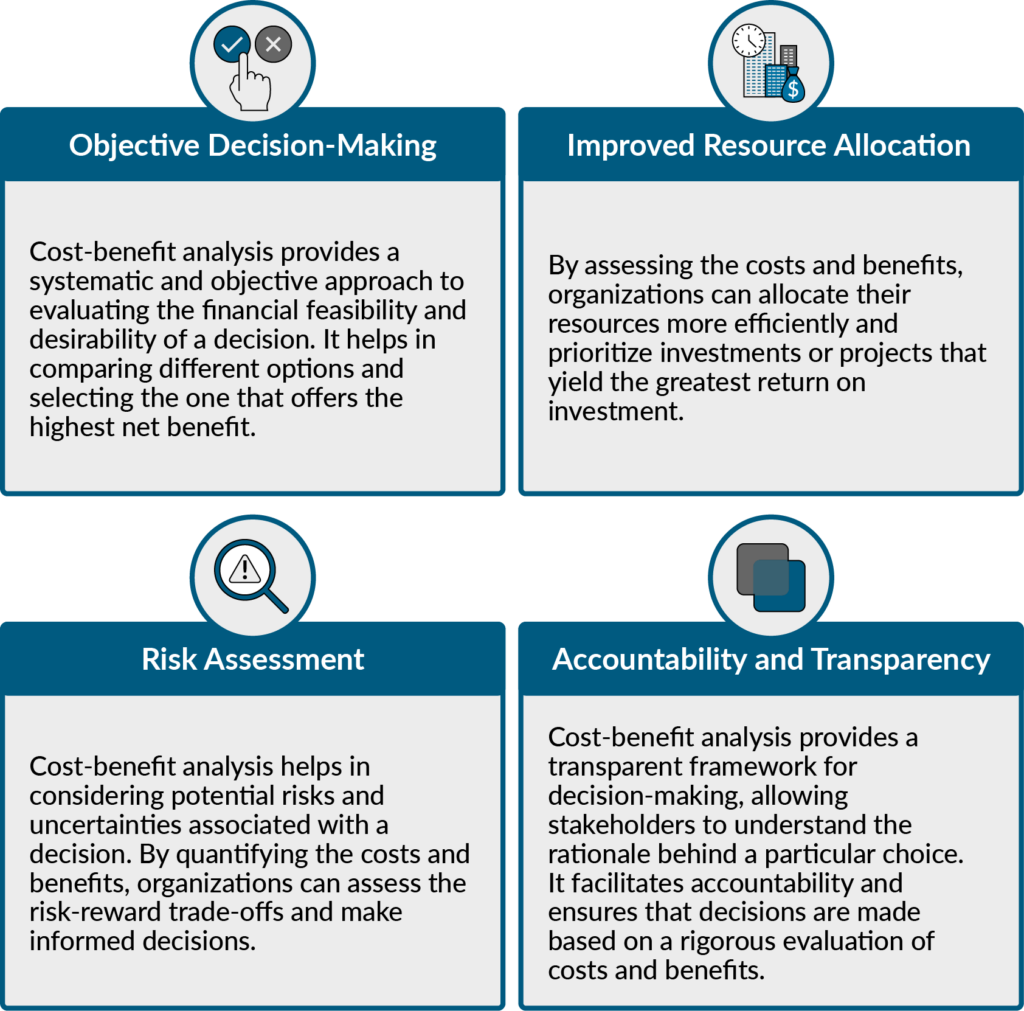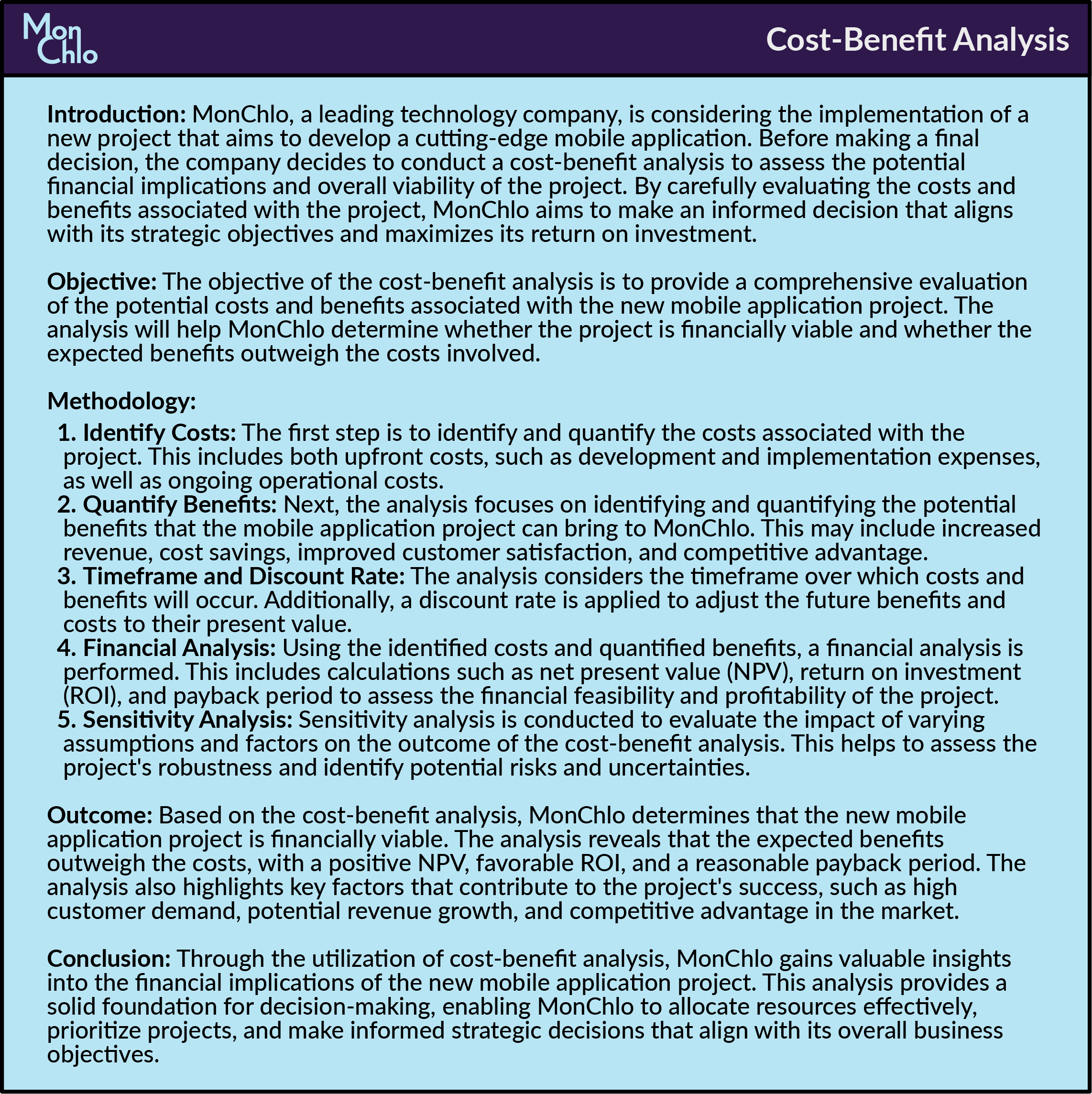Cost-Benefit Analysis
Cost-benefit analysis is a method used in strategic operations to assess the costs and benefits associated with a particular decision, project, or investment. It involves comparing the expected costs against the expected benefits to determine whether the decision or investment is financially viable and worthwhile.
Cost-benefit analysis is popular because it provides a systematic and structured approach to evaluating the financial implications of a decision. It helps decision-makers weigh the potential gains and losses, quantify them in monetary terms, and make informed choices based on the net benefit.
The parts of a cost-benefit analysis typically include:

- Identification and measurement of costs: This involves identifying all relevant costs associated with the decision, including initial investment costs, operating costs, maintenance costs, and any other expenses incurred.
- Identification and measurement of benefits: This involves identifying and quantifying the positive impacts or benefits expected from the decision. These benefits can be tangible, such as increased revenue or cost savings, or intangible, such as improved customer satisfaction or brand reputation.
- Time value of money: Cost-benefit analysis takes into account the time value of money by discounting future costs and benefits to their present value. This allows for a fair comparison of costs and benefits occurring at different points in time.
- Quantification and comparison: Costs and benefits are quantified in monetary terms to facilitate a direct comparison. This helps in assessing the net benefit by subtracting the total costs from the total benefits.
- Sensitivity analysis: Sensitivity analysis is performed to examine the impact of varying assumptions or changing circumstances on the outcomes. It helps in understanding the robustness of the analysis and identifying key drivers of the results.
The benefits of cost-benefit analysis include:

Overall, cost-benefit analysis is a valuable tool in strategic operations as it enables organizations to make informed decisions, allocate resources effectively, and maximize the value generated from their investments or projects.
Here’s a case study showcasing the use of cost-benefit analysis for MonChlo, our fictional technology company:
Case Study: Cost-Benefit Analysis for MonChlo

The above case study serves as an example to illustrate the application of cost-benefit analysis. It is important to tailor the analysis to the specific circumstances and objectives of the company being studied.
These tools (Decision Tree, Cost-Benefit analysis and SWOT) have gained prominence due to their simplicity, versatility, and practicality in supporting decision-making processes. Organizations may also employ other tools and techniques (such as scenario planning, Monte Carlo simulation, Decision Support Systems and Decision Matrices) based on their unique requirements and preferences However, it’s important to note that the choice of tools should be based on the specific context, nature of the decision, and the availability of data and resources and the preferences of the decision making team.